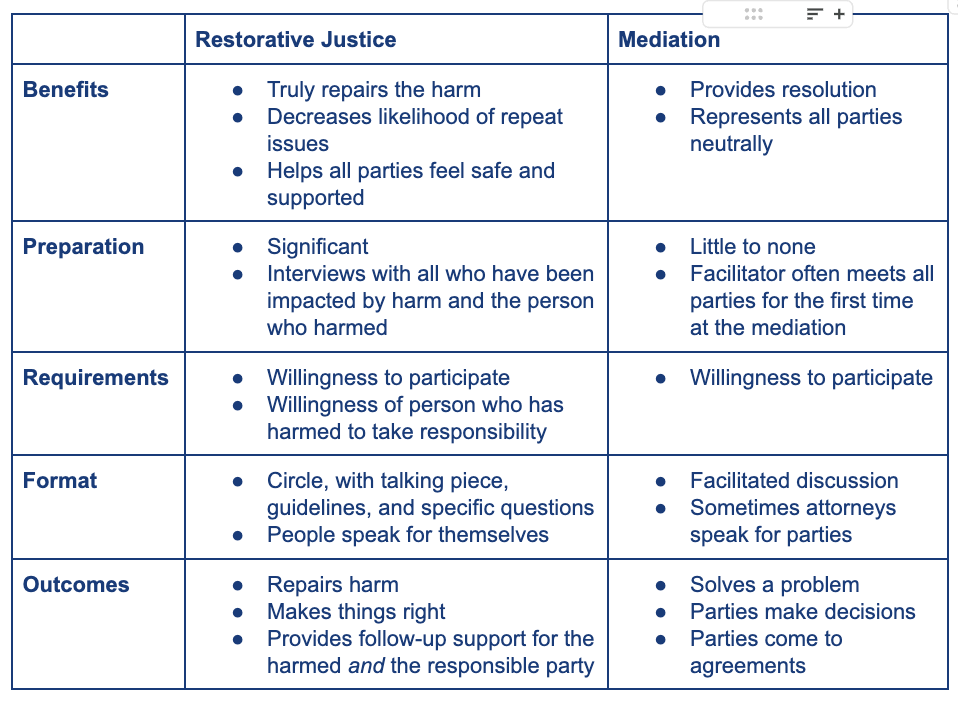The Differences and Similarities of Restorative Justice and Mediation
Mediation is only one pathway to conflict resolution. An alternative approach, the Restorative Justice approach, centers the relationship itself—ensuring that every person involved is treated with dignity, listened to fully, and given space to share how they have been affected. This restorative model broadens the focus beyond just solving the problem to repairing harm, rebuilding trust, and supporting the well-being of everyone involved.
Integrating Restorative Practices and PBIS: The System and the Heart
PBIS tells us we need consistency and clear expectations. RP gives us circles, routines, and language that make those things real.
Both PBIS and RP want the same outcomes:
Positive school climate
Students staying in the classroom
More instructional time
Fewer behavior referrals
Stronger relationships between teachers and among students
PBIS helps us measure whether it’s working. RP helps us make it work in a way that builds community.
Applying Mindfulness in Schools Through Restorative Practices and Circles
In Restorative Practices we apply mindfulness every time we sit down to participate in a circle or a restorative conversation. In fact, mindfulness is essential for the success of a restorative process in a number of ways–through active listening, speaking from the heart, and remaining open to others' truths.
Building Capacity to Address Conflict and Create Community Resiliency
In some cases, our focus becomes to teach Restorative Practices skills to a small group of individuals within the community, so that they are empowered to use these tools as needed going forward. This is capacity building: the process of developing a community’s ability to address issues in a way that will help them fulfill their mission.
Restorative Classroom Management
Restorative classrooms ask questions rather than punish, include rather than exclude, and build cooperation and student buy-in in the process.
Restorative Practices in the Workplace
A highly supportive work culture provides the safety to learn and grow, raise concerns, and try new things. Restorative Practices provide a process for establishing group norms, managing expectations, and developing the interpersonal skills essential for collaboration.
Success Stories: Implementing Restorative Practices During the Pandemic
Here we share two stories of how individuals implemented Restorative Practices with heart and creativity this year, after attending our trainings in Restorative Practices and Circle Keeping.
The Role of Restorative Practices in Trauma-Informed Schools
Chronic trauma can cause serious problems with learning and behavior. Students who act out due to anxiety and/or trauma need safe, supportive consistent classrooms and a respectful, consistent and collaborative approach to discipline.
Restorative Practices for Stressful Times: Adult SEL Tools for Well-Being
Explore simple, restorative ways to manage stress through SEL-informed practices like mindfulness, breathing, positive self-talk, and healthy routines. Learn how adults can build resilience, support their families and communities, and stay grounded during periods of upheaval.




